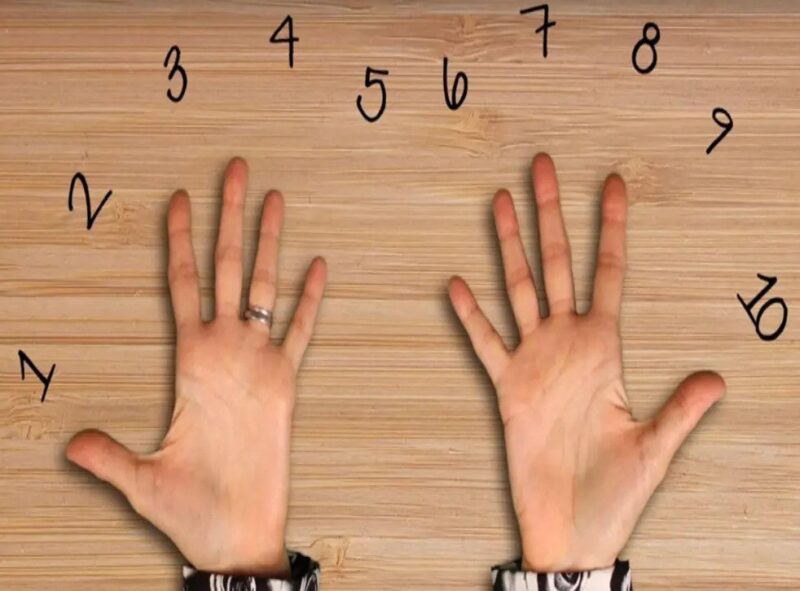Learning how to count is one of the first things children learn at school. So, nobody should be surprised why this is also one of the first things we need to pay attention to when we try to learn a new language.
While counting can be similar in certain language groups, they tend to have some differences that make them stand out from the crowd.
Today, we want to address counting in Spanish, and how we can learn it easier.
Basic Counting in Spanish (1-20)
Memorizing numbers from 1 to 10 is the foundation of learning how to count in Spanish. The range includes words for each number, requiring rote memorization.

Numbers 0 to 15 are particularly unique and don’t follow a pattern.
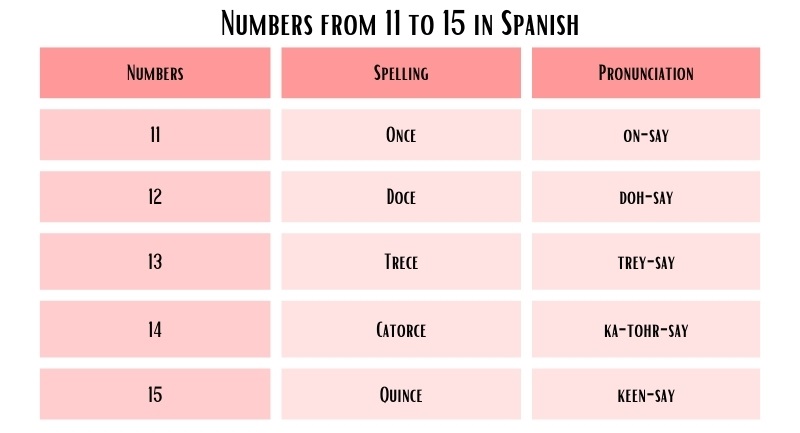
The pattern starts from 16 to 19. The pattern is “dieci” (ten) plus the unit number.
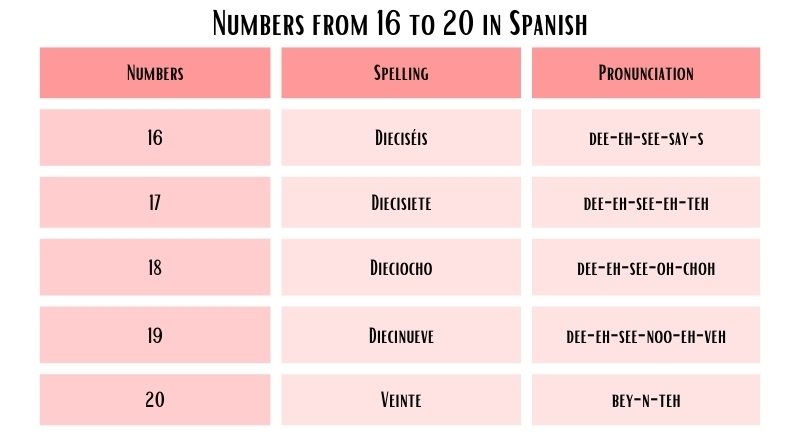
The pronunciation of these numbers can vary slightly between European Spanish and Latin American Spanish, affecting the sounds of certain vowels and consonants.
These numbers form the foundation for constructing higher numbers and understanding cardinal (quantity) and ordinal (order) numbers, which adjust based on the gender and quantity of the nouns they describe.
Counting Beyond 20
Learning to count from 21 to 99 in Spanish involves a pattern that requires only the addition of eight new words—the multiples of ten. Each ends in “-nta” except 20 (veinte). For numbers between the tens, the structure is “tens + y (and) + ones,” such as in “veintiuno” (21) or “treinta y dos” (32).
After 99, counting in Spanish utilizes a logical system of building blocks based on hundreds (“ciento,” “doscientos,” etc.), facilitating the counting up to 1,000. This system includes using “ciento” for numbers above 100 and switching to “cien” for exactly 100.
The logical progression and clear patterns make learning these numbers more manageable and productive for building language skills.
Advanced Counting Techniques
Mastering counting by hundreds and thousands in Spanish up to 1,000 reveals the logical structure and patterns of the language’s numerical system.
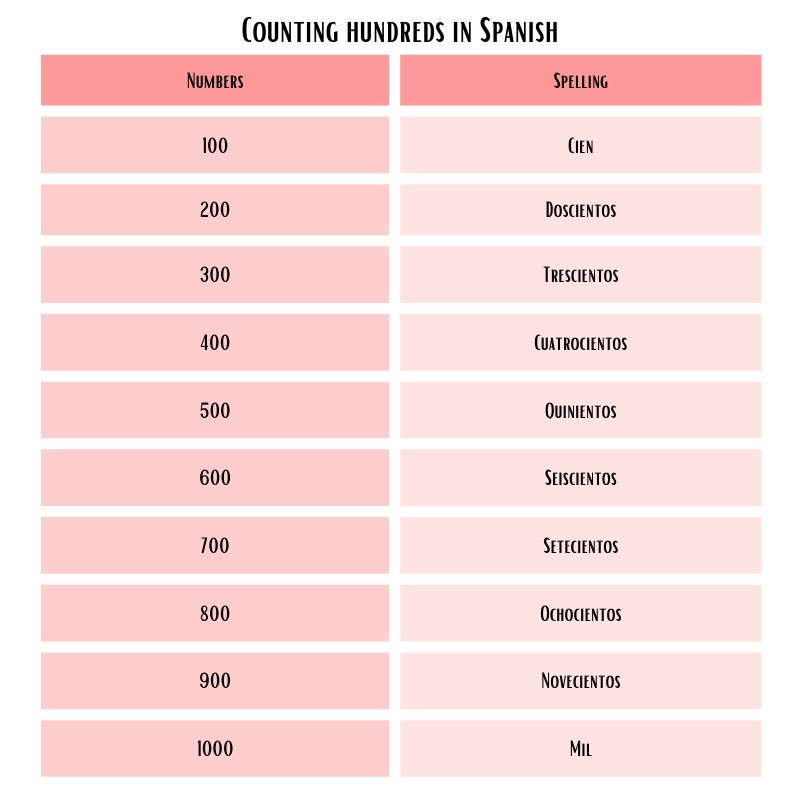
This segment of Spanish numeracy unfolds with “ciento” (101 to 199), progressing through to “doscientos” (200), “trescientos” (300), and so on, up to “novecientos” (900).
The transition from “cien” to “ciento” is a critical step in understanding the fluidity and scalability of Spanish numbers. Attention to numbers that can be tricky or are commonly misused, such as the subtle differences in pronunciation between 600 (seiscientos) and 700 (setecientos), ensures a more accurate use of numbers in various contexts.
Special Numbers in Spanish
Certain numbers hold specific significance in Spanish-speaking cultures, often tied to superstitions, cultural traditions, or significant historical events.
The Unlucky Number 13
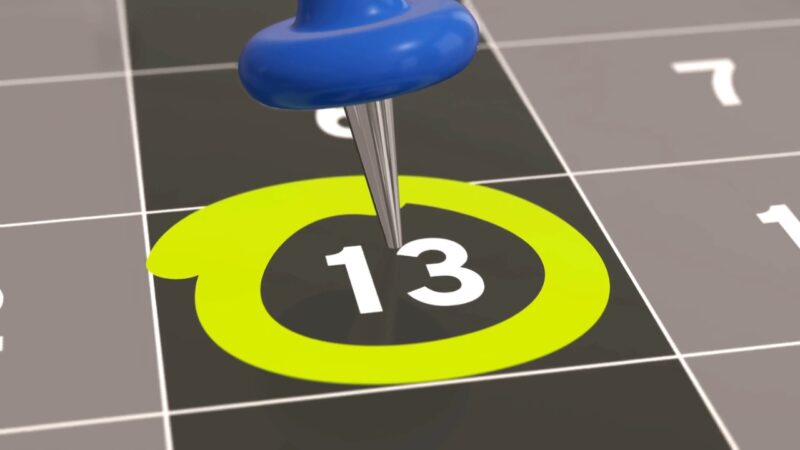
The number 13 is famously regarded with suspicion and unease, a sentiment that is not unique to, but certainly prevalent in, Spanish-speaking cultures.
This superstition, known as “triskaidekaphobia,” has its roots in various historical and mythological sources, and it manifests in tangible ways within society.
For instance, it’s not uncommon to find buildings that omit the 13th floor from their elevator buttons, jumping straight from 12 to 14 or streets where house number 13 is skipped.
The Fortunate Number 15 and Quinceañeras
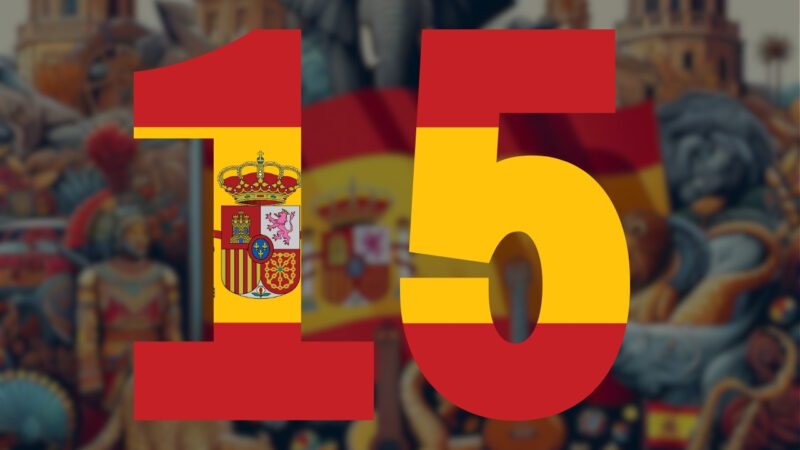
In stark contrast to the unlucky 13, the number 15 is perceived as a positive force, particularly in the context of Latin American cultures. The quinceañera, a rite of passage for 15-year-old girls, is a celebration that marks the transition from childhood to womanhood.
The Bottom Line
Learning how to count in Spanish can be a little bit tricky, but with memorizing and a ton of practice, you can ace it easily. I am certain you will find this insight to be of great help.
I am Edward Quin, a teacher and part-time freelance writer specializing in Spanish and English. With a major in these languages, I have a deep grasp of their structures, cultural richness, and literary traditions. My passion for languages inspired me to become a high school teacher, where I motivate students to discover new cultures and languages.
Related Posts:
- Learn to Count in German - Tips and Tricks
- How To Do A Scottish Accent? Just Follow These Tips
- Greetings and Goodbyes to Remember - Let's Learn Spanish
- How to Pronounce Days, Months, and Seasons in Spanish?
- Top 10 Books for Learning German Language - Improve…
- How to Have a British Accent? Practical Advice for…

